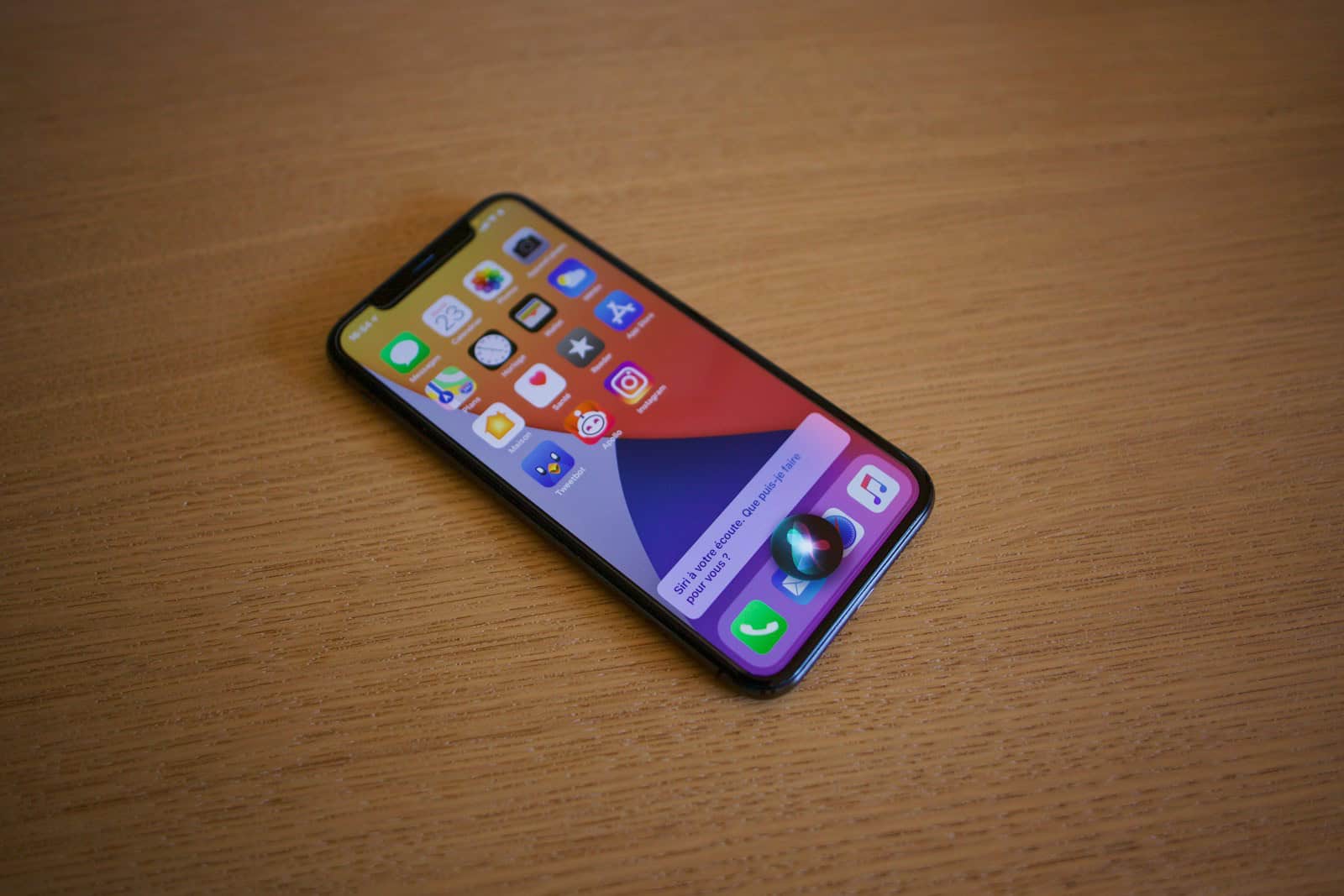Updating your iPhone can be frustrating when it doesn’t work as expected. The most common reasons for iPhone update failures are insufficient storage space, weak Wi-Fi connection, or an outdated iOS version. These issues often have simple solutions you can try at home.
Your iPhone’s software updates are crucial for security, performance, and new features. When updates fail, it may leave your device vulnerable or missing out on improvements. Fortunately, there are several troubleshooting steps you can take to get your iPhone updating again.
Let’s explore why your iPhone might not be updating and how to fix it. We’ll cover quick solutions and more advanced options if the problem persists. By the end, you’ll have a clear plan to get your iPhone running the latest iOS version.
| Common Update Issues | Quick Fixes |
|---|---|
| Low storage space | Delete unused apps or files |
| Weak Wi-Fi | Move closer to router or use cellular data |
| Outdated iOS | Update using a computer |
| Software glitch | Restart iPhone or reset settings |
Troubleshooting Common iPhone Update Issues
When your iPhone isn’t updating, it can be frustrating, especially with critical security patches and feature enhancements at stake. Here’s a quick guide on the most common reasons your iPhone might not update and the solutions to fix each issue.
1. Insufficient Storage Space
One of the most common reasons for failed updates is lack of storage space. iOS updates can require several gigabytes of free space, especially for major releases.
- Go to Settings > General > iPhone Storage to see available storage.
- If space is low, delete unnecessary apps, photos, or files to free up space.
- After freeing space, try the update again.
2. Weak or Unstable Internet Connection
iOS updates require a stable Wi-Fi connection. An unstable connection can cause the update to fail or take too long to download.
- Check your Wi-Fi signal strength. If weak, move closer to the router or switch to a stronger network.
- Reset your Wi-Fi by toggling it off and on in Settings > Wi-Fi.
- If the problem persists, consider using a different Wi-Fi network to download the update.
3. Battery Level Below 50%
Your iPhone needs at least 50% battery charge to perform an update. If your battery is low, the update will pause.
- Plug your iPhone into a charger and ensure it has more than 50% charge before trying to update again.
- Keep the device plugged in throughout the update to avoid interruptions.
4. Server Issues from Apple
Sometimes, Apple’s servers are overloaded or undergoing maintenance, which can prevent updates from downloading or installing properly.
- Check Apple’s System Status page for any ongoing issues with iOS updates.
- If server issues are reported, try updating again later when the servers are less busy.
5. Software Glitches or Corrupt Update Files
If your iPhone downloaded a corrupted update file or is experiencing a software glitch, it can stop the update from installing.
- Go to Settings > General > iPhone Storage, find the update file, and delete it if it exists.
- After deleting the update file, restart your iPhone and try downloading the update again.
6. Outdated iOS Version
Some iPhones may require incremental updates to reach the latest iOS version, especially if the device hasn’t been updated in a while.
- Check which iOS version you’re on by going to Settings > General > About.
- If you’re behind by multiple versions, install each update in sequence until you reach the latest iOS version.
7. Compatibility Issues
Older iPhone models may not support the latest iOS versions. If your iPhone is several generations old, it’s possible it’s reached the end of its update cycle.
- Visit Apple’s support page to check if your iPhone model supports the latest iOS version.
- If your device isn’t compatible, consider upgrading to a newer model to access recent updates and features.
8. Using a VPN
VPNs can sometimes interfere with iOS updates by slowing down or blocking the download process.
- If you use a VPN, turn it off by going to Settings > VPN and toggling it off.
- Once disabled, try the update again.
Quick Reference Table for iPhone Update Solutions
| Issue | Solution |
|---|---|
| Low Storage | Delete files or apps, then try updating again |
| Weak Wi-Fi | Use a stronger network or move closer to the router |
| Low Battery | Charge to at least 50%, then try updating |
| Apple Server Issues | Check Apple’s System Status page and try again later |
| Corrupt Update File | Delete the file in iPhone Storage, then redownload |
| Outdated iOS | Update incrementally if several versions behind |
| Device Compatibility | Verify compatibility on Apple’s support page |
| VPN Interference | Disable VPN and try updating again |
With these solutions, you should be able to troubleshoot and resolve any iPhone update issues effectively. Regular updates help keep your iPhone secure and optimized, so ensuring your device can update smoothly is essential for the best performance and experience.
Understanding iPhone Software Updates
iOS updates bring new features and fix security issues. Knowing which version you need and how to get it is crucial for keeping your device current.
Compatibility and Software Requirements
Not all iPhones can run the latest iOS. Older models have limits on which versions they support. To check your iPhone’s compatibility, go to Settings > General > About. Look for the “Software Version” to see what iOS you’re running.
Apple typically supports iPhones for 5-6 years with updates. For example, iOS 15 works on iPhone 6s and newer. If your device is older, you might need to stick with an earlier version.
Your iPhone needs enough storage space for updates. iOS updates can be large, often 2-4 GB. If you’re low on space, you may need to delete apps or files first.
Identifying the Latest Update
To find the newest iOS version, open Settings > General > Software Update. Your iPhone will check for updates automatically. If one is available, you’ll see its version number and details.
Beta versions are pre-release software for testing. Unless you’re a developer, stick to official releases. They’re more stable and secure.
Here’s a quick reference for recent iOS versions:
| iOS Version | Release Date | Key Features |
|---|---|---|
| iOS 16 | Sept 2022 | Lock screen customization |
| iOS 15 | Sept 2021 | Focus mode, Live Text |
| iOS 14 | Sept 2020 | Home screen widgets, App Library |
Always back up your iPhone before updating. This protects your data if anything goes wrong during the update process.
Pre-update Checklist
Before updating your iPhone, ensure your device is ready. Check your internet connection and available storage space to avoid common update issues.
Ensuring Connectivity
A stable internet connection is crucial for a smooth iPhone update. Connect to a reliable Wi-Fi network before starting. Avoid public Wi-Fi as it can be slow or unstable.
Turn off your VPN if you use one. VPNs can interfere with the update process.
If Wi-Fi isn’t available, you can update using cellular data. Be aware this may use a lot of data.
Test your connection speed. Fast.com or Speedtest.net are good options. Aim for at least 10 Mbps download speed for quick updates.
Managing Storage Space
Insufficient storage often prevents iPhone updates. Check your available space in Settings > General > iPhone Storage.
Delete unused apps, photos, and videos to free up space. Back up important data first.
Clear your browser cache and delete old messages. These can take up surprising amounts of space.
If needed, offload apps. This keeps documents and data but removes the app itself.
| Action | Potential Space Saved |
|---|---|
| Delete unused apps | 50 MB – 2 GB per app |
| Clear cache | 100 MB – 1 GB |
| Delete old messages | 1 GB – 5 GB |
| Offload apps | Varies by app |
Aim for at least 5 GB of free space before updating. This ensures room for the update file and installation process.
Troubleshooting Update Issues
When your iPhone won’t update, several common problems can occur. Addressing these issues often resolves update failures and gets your device running the latest iOS version.
Addressing Common Update Errors
If you see an error message during an update, try these steps:
- Check your internet connection
- Restart your iPhone
- Free up storage space
Sometimes the update server is busy. Wait a few hours and try again. If you’re unable to check for updates, reset your network settings:
- Go to Settings > General > Transfer or Reset iPhone
- Tap Reset > Reset Network Settings
For persistent issues, connect your iPhone to a computer and update through iTunes or Finder.
What To Do If an Update Fails
When an update fails, try these troubleshooting tips:
- Delete the update and redownload it
- Update using a different Wi-Fi network
- Use a computer to update your iPhone
If the progress bar gets stuck, don’t panic. Leave your iPhone plugged in and wait. If it doesn’t move for over an hour:
- Force restart your iPhone
- Try updating again
As a last resort, put your iPhone in recovery mode:
- Connect to a computer with a USB cable
- Follow Apple’s steps to enter recovery mode
- Choose “Update” when prompted
| Update Method | Pros | Cons |
|---|---|---|
| Over-the-air | Convenient | Requires Wi-Fi |
| iTunes/Finder | More reliable | Needs computer |
| Recovery Mode | Can fix major issues | May erase data |
Contacting Support for Update Problems
When your iPhone won’t update, reaching out to Apple Support can provide solutions. They offer various ways to get help and can guide you through troubleshooting steps.
When to Reach Out to Apple Support
Contact Apple Support if you’ve tried basic troubleshooting without success. This includes situations where your iPhone gets stuck during an update or shows an error message. You should also call if the progress bar doesn’t move for over an hour.
Apple’s experts can help with issues like:
- Failed updates
- Frozen screens
- Error codes
- Storage problems preventing updates
They may ask you to connect your iPhone to a computer with iTunes or Finder. This allows them to run diagnostics or attempt a restore if needed.
Alternative Support Options
Besides contacting Apple directly, you have other support choices:
- Visit an Apple Store: Make an appointment with the Genius Bar for in-person help.
- Use the Apple Support app: Download it on another iOS device to chat with experts.
- Check Apple’s support website: Find articles and forums with solutions.
| Support Option | Pros | Cons |
|---|---|---|
| Phone Support | Direct help | Possible wait times |
| Apple Store | Hands-on assistance | Requires travel |
| Support App | Convenient | Needs another device |
| Website | 24/7 access | Self-guided |
These options can help when you’re unable to update through normal means. The Apple Support website offers step-by-step guides for common update issues. Forums let you learn from others who’ve faced similar problems.
Frequently Asked Questions
iPhone updates can be tricky. These common questions address key issues you might face when trying to update your device’s iOS software.
How can I troubleshoot an iPhone that is not updating to the latest iOS version?
Start by checking your iPhone’s compatibility with the latest iOS. Ensure you have enough storage space. Restart your device and try again. Check your internet connection. If problems persist, try updating via iTunes or Finder on a computer.
What steps should be taken if an iPhone fails to install a new iOS update?
Free up storage space on your device. Connect to a stable Wi-Fi network. Charge your iPhone to at least 50%. If the update still fails, try installing it through iTunes or Finder on a computer. As a last resort, you may need to restore your iPhone.
What causes an iPhone to be unable to update to a new iOS release?
Common causes include insufficient storage space, weak internet connection, low battery, or server issues on Apple’s end. Your iPhone model may also be too old to support the latest iOS version.
How do I force my iPhone to update to the most recent iOS software?
Go to Settings > General > Software Update. If an update is available, tap “Download and Install”. If it doesn’t work, connect your iPhone to a computer and update through iTunes or Finder. You can also try putting your device in recovery mode as a last resort.
Why might an iPhone not recognize the availability of a new iOS update?
This can happen due to Apple’s staggered release schedule. Your region may not have the update yet. Check if your iPhone model supports the new iOS version. Ensure you have a stable internet connection. Try restarting your device or checking for updates manually.
What should be done if an iPhone displays an error during the iOS update process?
Note the specific error message. Restart your iPhone and try the update again. Ensure you have a stable internet connection and sufficient battery life. If the error persists, try updating through iTunes or Finder on a computer. You may need to put your device in recovery mode if all else fails.
| Error Type | Possible Solution |
|---|---|
| Error 4000 | Check USB connection |
| Error 9006 | Update iTunes/Finder |
| Error 14 | Free up storage space |
| Error 1671 | Disable VPN/firewall |







